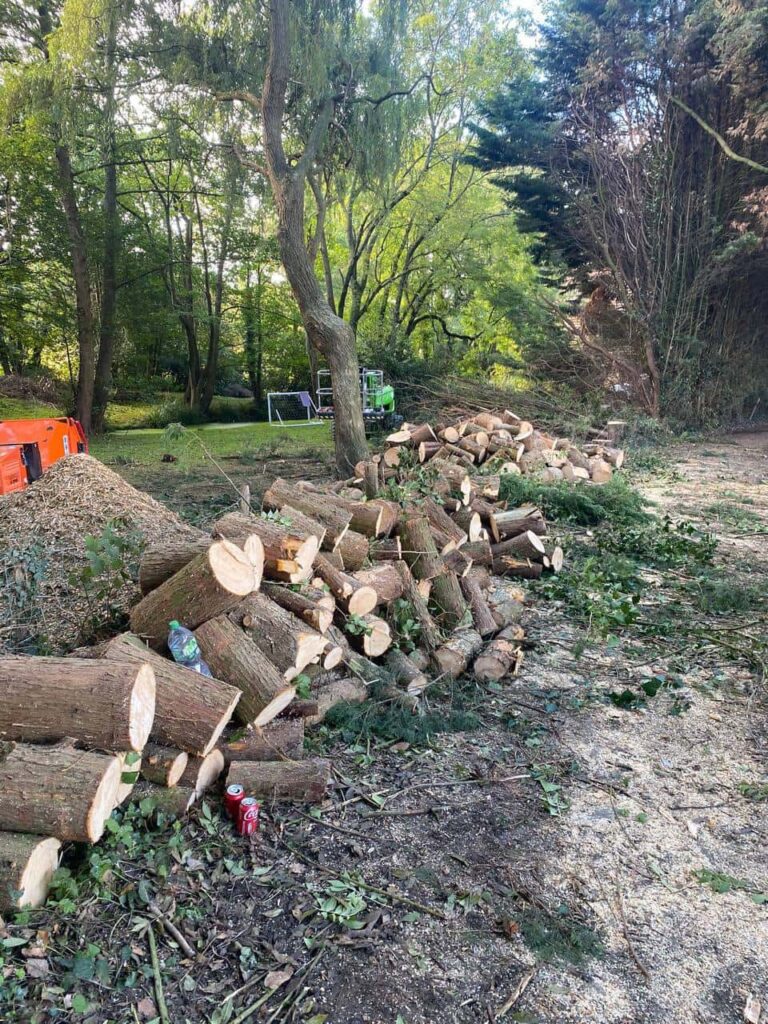The Role of Pruning in Preventing Tree Crowding: Ensuring Each Tree Gets Space to Thrive
In a healthy landscape, trees should have enough room to grow and develop properly. However, when trees are planted too closely together or allowed to grow unchecked, they can begin to compete for resources such as sunlight, water, and nutrients. This competition can lead to weakened trees, reduced growth, and even the risk of disease. At Daventry Tree Surgeons, we understand the importance of maintaining the right balance in your landscape through regular and professional pruning. In this blog post, we will explore how pruning plays a crucial role in preventing tree crowding and ensuring each tree has the space it needs to thrive.
Why Tree Crowding is a Problem
When trees are crowded, they are forced to compete for essential resources, and this competition can result in:
- Reduced access to sunlight: Crowded trees often have their canopies intertwined, preventing adequate sunlight from reaching all parts of the tree. This lack of sunlight can stunt growth and weaken the tree’s structure.
- Limited access to water and nutrients: Trees with overlapping root systems will compete for water and soil nutrients. Crowded conditions may mean that none of the trees get what they need to grow strong and healthy.
- Increased risk of disease and pests: Trees that grow too close to one another can develop a damp, shaded environment that encourages the growth of fungal diseases and pests.
- Weakened structural integrity: Trees that grow in close proximity may develop poor structural forms, with thin trunks or uneven branches, making them more susceptible to storm damage or breakage.
Proper pruning helps reduce these risks by selectively removing branches or even entire trees to allow more light, air, and space for remaining trees to flourish.
How Pruning Helps Prevent Tree Crowding
Pruning is one of the most effective ways to prevent tree crowding and promote the healthy growth of individual trees. Here’s how professional pruning contributes to better tree health:
1. Improving Canopy Structure
Pruning reduces the density of the tree’s canopy, allowing more sunlight to penetrate to the lower branches and the ground. This helps ensure that each tree in a crowded area has access to sufficient sunlight, which is vital for photosynthesis and healthy growth.
By selectively thinning out certain branches, you encourage stronger, healthier growth in the remaining branches. A well-structured canopy reduces the risk of disease and enhances the tree’s resilience to strong winds and storms.
2. Enhancing Airflow
Crowded trees often suffer from poor air circulation, which can lead to moisture build-up and create a breeding ground for fungi and pests. Pruning opens up the canopy, allowing for better airflow between trees. This improved circulation reduces moisture levels, helping to prevent fungal infections like mildew and rot that thrive in damp conditions.
Improved airflow also strengthens the tree’s overall health, as it promotes faster drying after rainfall, minimising the risk of diseases that target wet foliage.
3. Reducing Competition for Resources
When trees are planted too closely together, their root systems often overlap, causing them to compete for water and soil nutrients. Over time, this competition can weaken trees, stunting their growth or causing them to become stressed. Strategic pruning can alleviate this issue by removing some trees or limbs that are competing for resources, allowing the remaining trees to absorb more water and nutrients.
By managing the number of trees and their branches, you help ensure that each tree has enough room to spread its roots and thrive.
4. Encouraging Proper Growth Patterns
Without regular pruning, trees can develop uneven or tangled growth patterns. Branches may grow into each other, becoming entangled and potentially causing structural problems. Pruning helps encourage healthy growth patterns by guiding the direction of branch growth and removing weak, overcrowded, or crossing branches.
This careful management not only ensures that each tree grows in a balanced way but also enhances the tree’s appearance, making the landscape more visually appealing.
When and How to Prune to Prevent Tree Crowding
Pruning should be a regular part of your tree maintenance routine to prevent crowding and encourage healthy development. However, it’s essential to prune at the right time of year and with the right technique.
1. Pruning Timing
The ideal time for pruning depends on the species of tree, but in general, pruning is best done during the dormant season—usually late winter or early spring. During this time, trees are not actively growing, so pruning causes less stress and encourages vigorous new growth in the spring.
2. Professional Techniques
Pruning can be complex, and improper techniques can do more harm than good. That’s why it’s essential to rely on professional tree surgeons like Daventry Tree Surgeons. We use precise methods to ensure that each cut promotes the tree’s health, preventing over-pruning or damage that could weaken the tree.
For example, we avoid topping (cutting off the top of the tree) as it can lead to a weak structure and unhealthy regrowth. Instead, we focus on crown thinning and selective branch removal to open up the canopy and allow for proper air and light penetration.
Conclusion: Trust Daventry Tree Surgeons for Professional Pruning
Tree crowding is a common issue in both urban and rural landscapes, but with regular, expert pruning, you can ensure that each tree has the space and resources it needs to thrive. At Daventry Tree Surgeons, we offer professional pruning services to help prevent tree crowding, improve tree health, and enhance the beauty of your landscape in Daventry, Northamptonshire.
Call us on: 01327 225 195
Click here to find out more about Daventry Tree Surgeons
Click here to complete our contact form and see how we can help with your tree’s needs.

